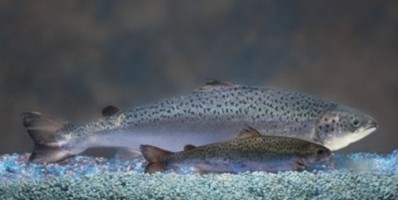SPECIAL EDITION: FREE-FROM FOODS
‘Could this be the next peanut?’: Assessing novel allergen potential

When it comes to getting your food or ingredient passed novel foods regulations, one area for concern by many is the potential that it could cause new forms of allergy. In this special edition article FoodNavigator looks into just how regulators try to assess allergenicity.
Speaking with FoodNavigator, allergy expert Professor Clare Mills from Manchester University, UK, said industry can help regulators to better assess the potential allergenic risk of any new food applications by providing better quality data and working with experts who can provide reliable tab tests.
“If we are going to meet the issues with food security then we need to be able to use what we have more efficiently, and have that flexible sourcing of ingredients,” said Mills – who also sits on the novel foods committee (ACNFP board) for the UK Food Standards Agency.
However, she said whilst in general industry and regulators both want to get new products onto the market, safety will always be the key concern.
“In any risk assessment, you have to remember that it is a risk assessment,” said Mills. “There is always a certain amount of risk and uncertainty – and what we are always trying to do is minimise that.”
“With foods and food ingredients that are known in other areas of the world, or are being produced in a new way perhaps, I think we can assess the allergenic risk with a pretty good degree of accuracy.
“But, protecting the population against a completely new food, that has never been eaten before, and could be ‘the new peanut’ – that is actually quite difficult, because we are missing so many pieces of knowledge.”
Quality data
Mills said it is ‘very very important’ for a novel food applicant to provide the relevant authorities with good quality and reliable data: “One of the things that is important for the food industry is that if they going to do this, they get advice and support from reputable scientists and that they get good quality analysis done by good laboratories.”
“It will be much harder to make a risk assessment if the data are presented poorly – and that does happen sometimes,” she said. “If you want to put your quality product on the market, you need to do quality analysis to back it up.”
“I have seen graphs without labelled axis,” she said. “I think that’s shameful on companies that are going to be putting something into people’s food, and people need to be able to trust.”
“It’s sad, because other parts of the industry do it extremely well. But it’s patchy.”
The allergen expert added that providing the right sort of data has been a difficulty for some people in the industry, and that accessing external expertise should be seen as a solution: “For a lot of companies, their chemical safety manager is covering everything, and allergens have come along and just not fitted in any of the classical paradigms,”
“Allergens are a very different hazard to any of the other chemical hazards that they encounter,” she said.
Mills explained that characterising allergens is often more like the challenges that companies face when characterising a biologically active molecules – because proteins are much more difficult to characterise.
However, she added that a host of new methods are now ‘revolutionising’ the characterisation of proteins. An example of this is proteomics, which is offering an opportunity for the food industry to provide good quality data that they could not gave provided 20 years ago, suggested Mills.
“Being able to access specialist expertise is important,” reiterated the ACNFP board member. “It is out there, and if that doesn’t seem readily accessible to the companies within the industry then that’s perhaps something that they will have to deal with as a community,” she suggested.























